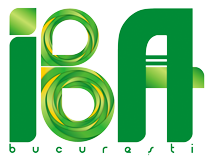In a context where glass is frequently promoted as a safe and environmentally friendly alternative to plastic packaging, a new study published by ANSES (the French Agency for Food, Environmental and Occupational Health & Safety) draws attention to an unexpected source of microplastic contamination: the metal caps used on glass packaging.
Contrary to common perception, the research found that beverages bottled in glass containers may contain significantly higher concentrations of microplastic particles than those packaged in plastic or metal. The analysis, conducted across a wide range of products (lemonade, beer, tea, juice, and water), revealed an average of approximately 100 microplastic particles per liter in glass bottles—5 to 50 times higher than in other types of packaging.
This contamination is not attributed to the glass itself, but rather to the polyester-based paint applied on the interior of metal caps. During storage and transport, friction between caps—or between caps and other surfaces—causes microscopic fragments of paint to detach and ultimately migrate into the bottled liquid. Spectroscopic analyses confirmed that the chemical and morphological characteristics of these particles match the composition of the cap paint.
Practical Applications and Recommendations
As part of the study, researchers tested straightforward mitigation measures. Simply blowing compressed air over the caps significantly reduced the number of microplastic particles (from 287 to 106 particles per liter). An additional rinse using water and alcohol further reduced this number to approximately 87 particles per liter—a decrease of around 70%.
These findings suggest that minimal interventions on the production line—such as cleaning caps before bottling, minimizing mechanical friction during handling, and reconsidering the chemical composition of the paints used—can substantially reduce microplastic contamination.
Public Health Implications
While there is currently no scientific consensus on safe thresholds for microplastic ingestion, numerous studies highlight potential adverse biological effects, including inflammation, oxidative stress, endocrine disruption, and bioaccumulation. In this context, reducing consumer exposure through improved packaging practices emerges as a strategic priority for both industry and regulatory bodies.
Conclusion
This study challenges the widely held belief that glass packaging is inherently superior in terms of food safety. Although glass as a material is inert and recyclable, the interaction of auxiliary components—particularly painted metal caps—can represent a significant contamination vector.
Therefore, a holistic approach to food packaging design is essential, one that considers not only the primary material but all elements that may come into contact with the final product. The ANSES study thus opens a critical avenue for applied research and calls for a reassessment of manufacturing standards in the food and beverage industry.
Source: ANSES – Caps on glass bottles contaminate beverages with microplastics

